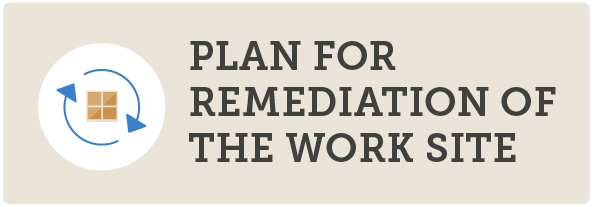What’s the first thing that comes to mind when you think of your industrial or commercial demolition project? Likely, you’re thinking of three things: the cost, the amount of waste it will produce, and how you’re going to get rid of that waste.
However, building demolition is not just all about waste. It involves a great deal of recycling when done correctly.
The “done correctly” part is important because, according to the EPA, “demolition represents more than 90 percent of total C&D [construction and demolition] debris generation, while construction represents less than 10 percent.”
If you’ve got a building demo in your future, then it is key for you to create a solid demolition scrap metal asset recovery plan to ensure that you can recover as much value as possible.
Here are some tips on how to create that plan so that, with the right commercial demolition contractor, your demo project can be a success.
Creating a Demo Scrap Metal Asset Recovery Plan With the Help of Demolition Services
Though your commercial demolition contractor should create this plan for you, it is important for you to have an idea of what it will involve.
Below are the steps for creating a scrap metal asset recovery plan.
Step 1: Identify Salvageable Assets
The first step in a recovery plan is to record and document all potential salvageable assets. The documentation should include photos as well as the size and dimension of the materials and the volume of waste.

With this information, the next move is to determine what materials are salvageable and can bring in the most ROI if sold.
Step 2: Create a General Value Assessment
With the salvageable assets determined, it is now time to find their general value. How much can be obtained from the materials deemed salvageable? You can research current scrap metal prices online, but note that the prices are only for reference, and scrap yards are not held to them.
Step 3: Remove Hazardous Materials
It’s a guarantee that your building demolition will involve hazardous materials, so another part of the recovery plan is determining how to properly remove those hazardous materials safely, and also how to dispose of them.
Step 4: Plan for Remediation of the Work Site
An important part of this plan is determining the remediation of the worksite once the building has been demolished. As mentioned above, the waste involved in this kind of demo is significant. It’s imperative to take into consideration any environmental concerns and make appropriate plans for disposal.

This is where knowledge about recycling practices becomes very important. Metals account for 12.62% of the total municipal solid waste recycling in the United States. It is important to try and recycle as many materials from the demo as possible. A demolition company that has expertise in asset recovery can identify and prep the materials for recycling.
Step 5: Site Sweep
Once you’ve determined what can be sold or reused, the next step is a soft sweep of the property that’s set to be demolished in order to remove any equipment, fixtures, and furnishing materials that do not need to be demolished.
Then you move on to the bigger items, which include the structural elements of the building. Demolition professionals know how to take down these precious building parts without risking your asset return rates.
Asset recovery is one of the best ways to recoup the major costs involved in demolishing a building, and it doesn’t risk sacrificing the valuable materials that can be recovered.
